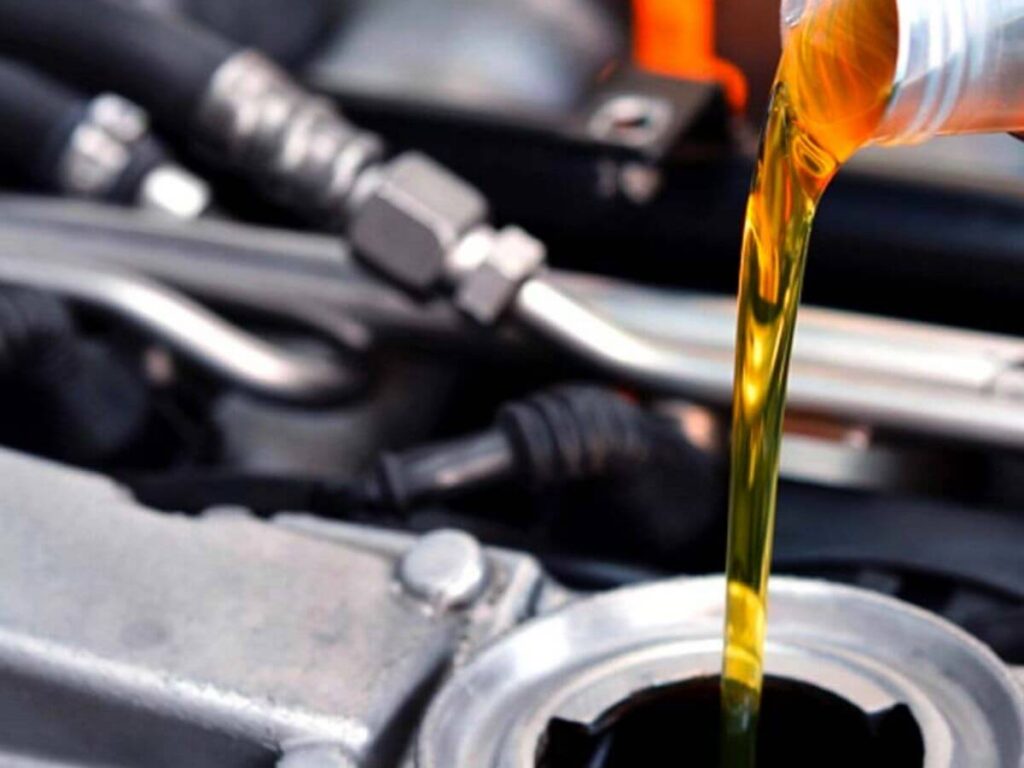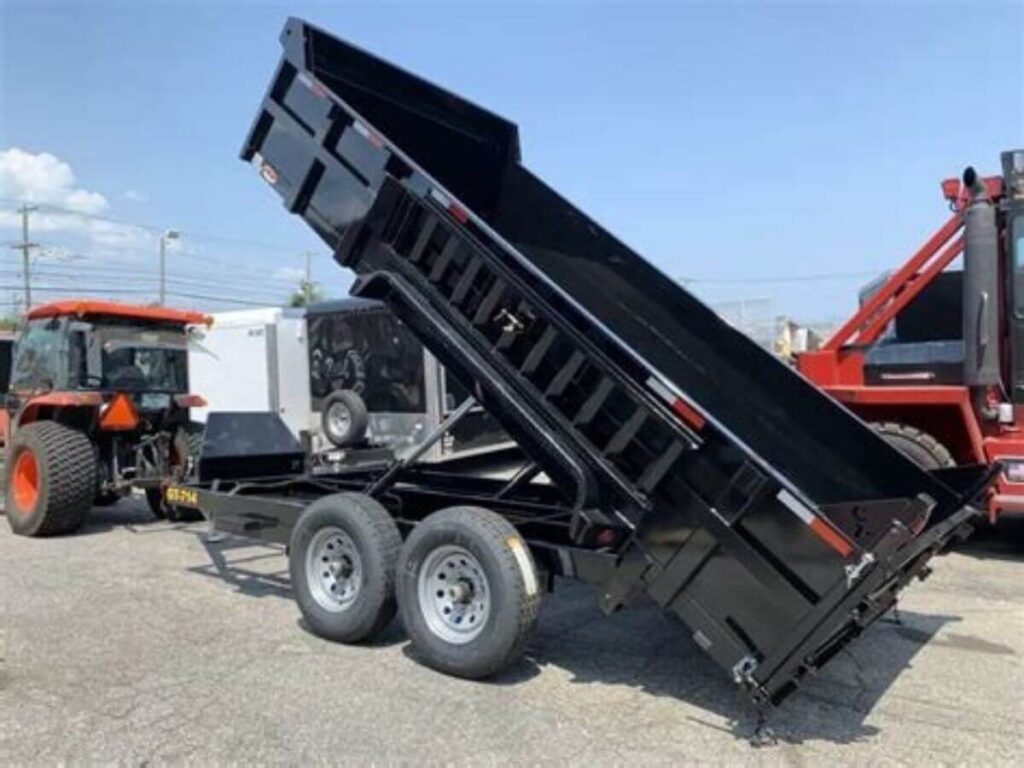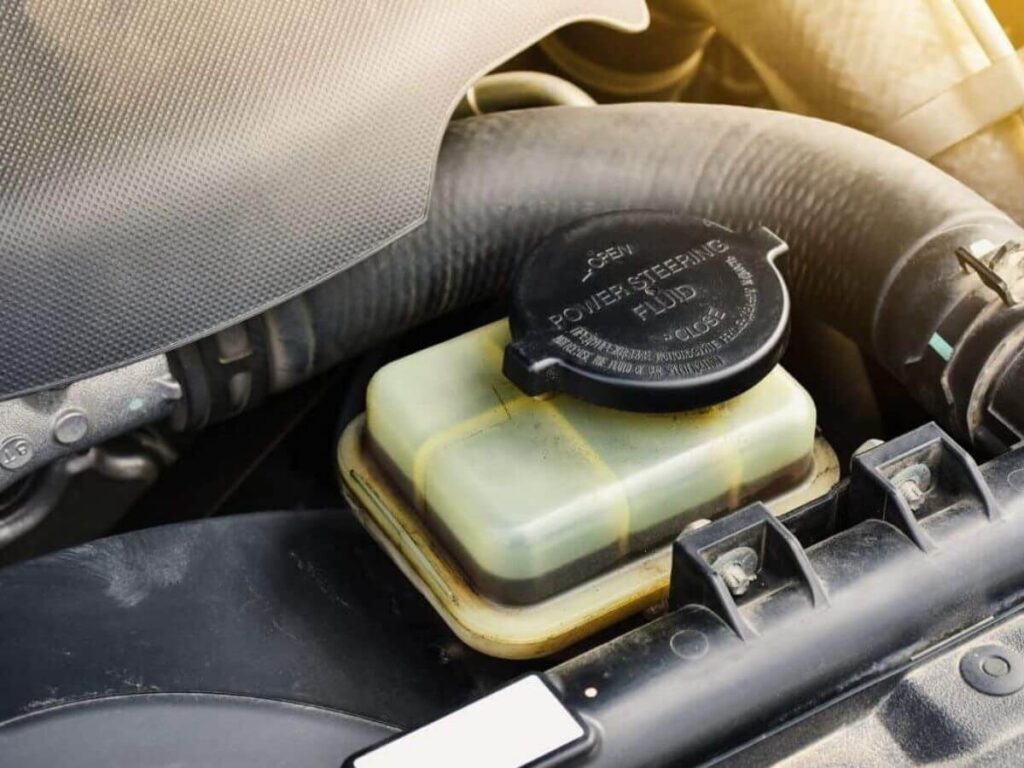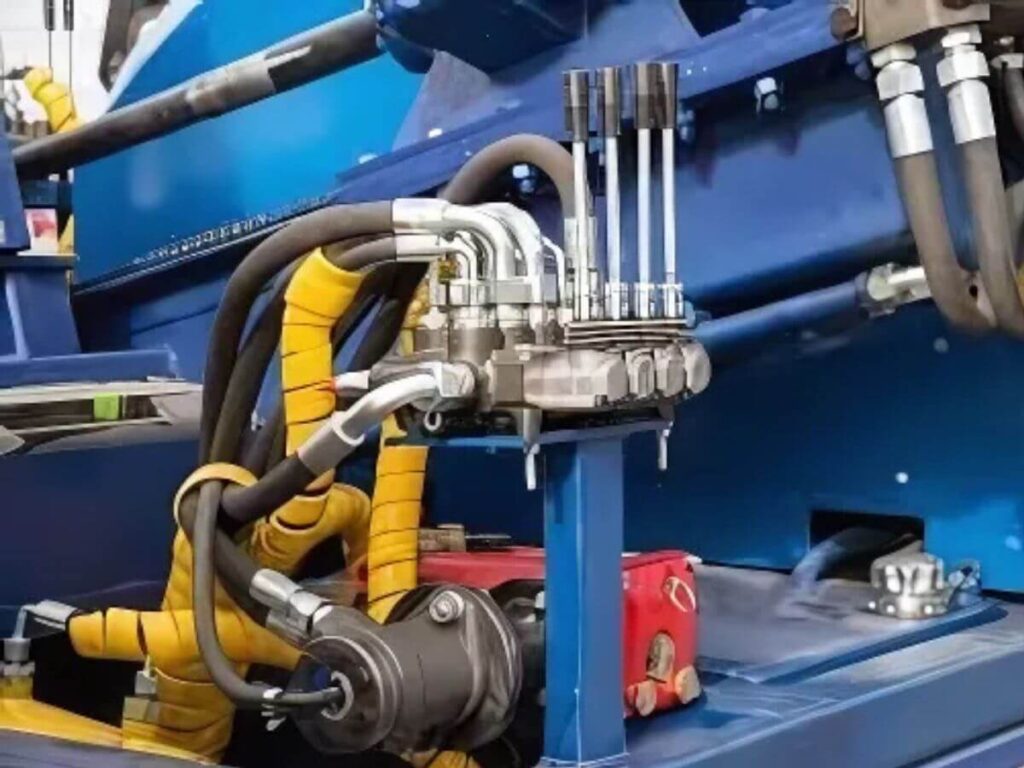A few years back, we had three trailers running fine, then one suddenly slowed to a crawl. Same model, same load, same job site. The only difference? The hydraulic fluid.
That’s when I started paying attention to what was going in the tank.
This guide is based on real-life use cases, backed by conversations with mechanics, operators, and fluid suppliers. I’ve done the legwork so you don’t have to.
You’ll learn how to choose the right hydraulic fluid for dump trailers in different climates, how fluid impacts lift speed, and what to avoid. If you’re tired of guessing or getting inconsistent performance, this guide will fix that.
So read on!
1. What Does Hydraulic Fluid Do in a Dump Trailer?
Hydraulic fluid isn’t just “liquid in a tank.” It’s the lifeblood of your dump trailer’s lifting system. Without it, your trailer doesn’t raise, lower, or even respond correctly.
What It Actually Does:
Transfers Force: Hydraulic fluid moves power from the pump to the hydraulic cylinders. When you activate the trailer’s lift mechanism, the fluid pushes against the pistons to create the motion needed to raise or lower the bed.
Lubricates Moving Parts: The fluid also keeps internal parts running smoothly. It reduces friction inside the pump, valves, and cylinders so your system doesn’t grind itself down over time.
Cools the System: During operation, hydraulic components generate heat. The fluid helps carry that heat away from critical parts, keeping the system from overheating or breaking down under pressure.
Why It Matters for Performance:
- Responsiveness: If your fluid is too thick, your trailer lifts slower than it should—or not at all. If it’s too thin, you lose pressure and the system becomes weak or jerky.
- Protection Against Wear: The right fluid forms a barrier between metal parts, protecting against wear and early failure. Bad fluid, or the wrong kind, can actually cause damage while it’s supposed to be helping.
- System Longevity: Good hydraulic fluid keeps seals intact, protects against rust, and prevents contamination. Long-term, that adds up to fewer repairs and longer equipment life.
2. Types of Hydraulic Fluids
I used to think any hydraulic fluid would do the job. Then I had to drain an entire system because the wrong type caused foaming and slow lifts. That mistake taught me the hard way that not all fluids are built for the same conditions.
- Petroleum-Based Hydraulic Fluid: This is the most common type used in standard dump trailers. It offers decent lubrication and performance but tends to break down faster in extreme temperatures.
- Synthetic Hydraulic Fluid: These are made to handle high pressure and wide temperature swings. They cost more upfront but last longer and protect parts better over time.
- Water-Based Hydraulic Fluid: This type is sometimes used where fire resistance is needed. It’s not ideal for most dump trailers because it can wear out metal parts quicker.
- Biodegradable Hydraulic Fluid: Great for jobs in environmentally sensitive areas like farms or construction near water. It’s safer to use around soil but may not hold up well under heavy loads.
- Multi-Viscosity Hydraulic Fluid: Formulated to perform across both hot and cold weather. This is a solid option if your trailer operates year-round in changing conditions.
- OEM-Specific Hydraulic Fluid: Some manufacturers require a specific fluid blend for warranty protection. These usually contain special additives designed for that brand’s system.

3. Cold Weather vs Hot Weather Fluid
Hydraulic fluid isn’t one-size-fits-all, especially when temperatures swing to the extreme. The wrong fluid in the wrong season can lead to sluggish lifts, pressure loss, or even equipment damage.
| Feature | Cold Weather Fluid | Hot Weather Fluid |
| Viscosity | Lower viscosity to stay fluid in cold temps | Higher viscosity to handle heat without thinning |
| Performance | Stays responsive in freezing conditions | Maintains pressure under high temperatures |
| Startup Behavior | Faster lift response during cold starts | Prevents loss of pressure during long operation |
| Additives | Includes anti-gelling and pour-point depressants | Contains anti-foam and oxidation inhibitors |
| Wear Protection | Protects against cold-start wear | Reduces wear from high heat and friction |
| Common Use | Winter jobs, snow regions, cold storage yards | Summer months, desert areas, hot work zones |
| Fluid Life Span | Shorter in high heat due to breakdown | Longer when used in warm temps only |
| System Compatibility | Requires seals that handle thinner fluid | Needs parts rated for higher heat resistance |
| Risks of Misuse | Can become too thick and slow if not rated | Can overheat and lose strength if too thin |
4. How to Check and Replace Hydraulic Fluid
Hydraulic fluid maintenance doesn’t need to be complicated. A quick check every now and then can prevent bigger problems down the line.
Check Fluid Level Regularly
Start by parking the trailer on level ground and turning off the engine. Let the system cool before removing the reservoir cap. Use the dipstick or sight gauge to check the fluid level. If it’s low, refill using the correct fluid type and never mix different grades. Low fluid can lead to weak lifting power and slower cycle times.
Inspect Fluid Condition
Good hydraulic fluid should look clear, with no foam, particles, or strange smells. If the fluid looks milky, dark, or has a burnt smell, it may be contaminated. Contaminated fluid puts extra stress on pumps and valves. It can also lead to long-term wear and expensive repairs. Regular checks help catch these issues before they affect performance.
Drain Old Fluid Safely
Place a container under the reservoir and open the drain valve carefully. Allow the fluid to empty completely, taking your time to avoid spills. Dispose of the old fluid based on your local waste handling rules. If the reservoir is dirty or has sludge, wipe it clean before adding new fluid. Clean internals mean your new fluid won’t pick up old contaminants right away.
Refill with New Fluid
Make sure you’re using the right hydraulic fluid for your trailer’s system. Pour it in slowly and stop once the fluid reaches the proper level. Don’t forget to run the lift a few times to remove any trapped air. Check the level again after cycling and top off if needed. Seal everything tight once you’re done to keep the system protected.

5. Signs You’re Using the Wrong Hydraulic Fluid
Using the wrong hydraulic fluid might not cause immediate damage, but it usually shows up sooner than you’d expect. If your trailer starts acting different without any clear reason, fluid choice is a good place to start.
- Slow or Jerky Lifting: If your trailer is lifting slower than usual or the motion feels jumpy, the fluid could be too thick or too thin. This often happens when the viscosity doesn’t match the operating temperature.
- Loud Pump Noise: A whining or groaning sound from the pump usually points to fluid issues. The wrong fluid can cause the pump to work harder than it should.
- Overheating During Operation: Hydraulic systems that run too hot may be using a fluid that cannot handle the temperature range. Heat buildup can break down additives and shorten system life.
- Foaming or Bubbles in the Reservoir: If you notice foam or air bubbles, the fluid might be reacting poorly with system components. This can also lead to pressure loss and sluggish performance.
- Burnt Smell or Discoloration: Dark, burnt-smelling fluid is often a sign of overheating or chemical breakdown. It means the fluid is no longer protecting your system properly.
- Seal Damage or Leaks: Wrong fluid types can swell, shrink, or dry out the seals inside your system. That usually leads to visible leaks around hoses or fittings.
- Poor Cold Start Performance: If your trailer struggles to lift in the morning but works fine later, the fluid may be too thick for cold weather. Low-temperature performance is a common issue with the wrong viscosity.

6. Common Mistakes to Avoid with Hydraulic Fluid
Hydraulic fluid may seem simple, but small mistakes can lead to big problems down the line. A little attention here can go a long way in keeping your dump trailer running like it should.
Mixing Different Fluid Types
One of the most common mistakes is combining different hydraulic fluids. Even if they look the same, the additives might not work well together. Mixing can cause foaming, clog filters, or reduce system performance. Always stick to the type recommended by the manufacturer.
Ignoring Temperature Ratings
Not all fluids are made for every climate. Using a fluid rated for hot weather during winter can cause thickening and poor lift response. In cold regions, low-temp fluid keeps the system moving smoothly. Always check the label before refilling.
Overfilling the Reservoir
Too much hydraulic fluid can cause pressure issues and make seals more likely to fail. It also increases the chance of spills when the fluid heats up and expands. Stick to the fill line or dipstick level for safe operation. More fluid is not always better.
Skipping Regular Fluid Checks
It’s easy to forget to check the fluid until something goes wrong. Dirty or low fluid can quietly wear out your pump or valves. A quick check once a week can prevent costly repairs. It only takes a minute and gives peace of mind.
Using the Wrong Fluid for Your System
Some systems are built for specific fluid types and won’t work well with generic options. Using the wrong one may void warranties or damage seals, pumps, and hoses. Always match the fluid to your equipment’s requirements. A quick look at the manual can save a lot of trouble.

7. Key Factors to Consider When Choosing Hydraulic Fluid
Picking the right hydraulic fluid isn’t just about filling the tank. It’s about matching the fluid to the job, the equipment, and the conditions your trailer works in every day.
Operating Temperature Range
Some fluids work better in the cold, while others hold up in high heat. Choosing one with the right viscosity for your climate keeps the system responsive. If your trailer operates year-round, look for multi-viscosity options. This helps maintain performance whether it’s freezing or sweltering. A fluid that performs poorly in extreme temperatures will show signs fast.
Equipment Manufacturer’s Recommendations
Always check the manual or spec sheet before buying fluid. Some systems are built with specific fluid types in mind. Using the wrong type can cause damage or void your warranty. The right match keeps everything working as intended. If the manual calls for a certain standard, stick to it.
Load and Duty Cycle
Heavy lifting and frequent use call for higher-quality fluids. If your trailer runs all day, every day, your fluid needs to stand up to the pressure. Look for fluids with wear protection and longer service life. Lighter jobs may not require top-tier fluid, but heavy-duty work demands it. Don’t let a cheap fluid hold back an expensive trailer.
Additive Packages
Additives help protect your hydraulic system from rust, wear, and oxidation. Different fluids come with different additive blends, and not all are created equal. Some also include anti-foam or cold-flow enhancers. These extras make a big difference in real-world performance. The right additives reduce breakdowns and keep your system cleaner.

Conclusion
Earlier, I told you about a trailer that wouldn’t lift because of the wrong fluid.
That one mistake stalled an entire job.
Don’t wait until your trailer stops mid-lift.
Act now, stay ahead, and keep things moving.
Rhinotrail is here to help. Contact us today for reliable trailer solutions.


